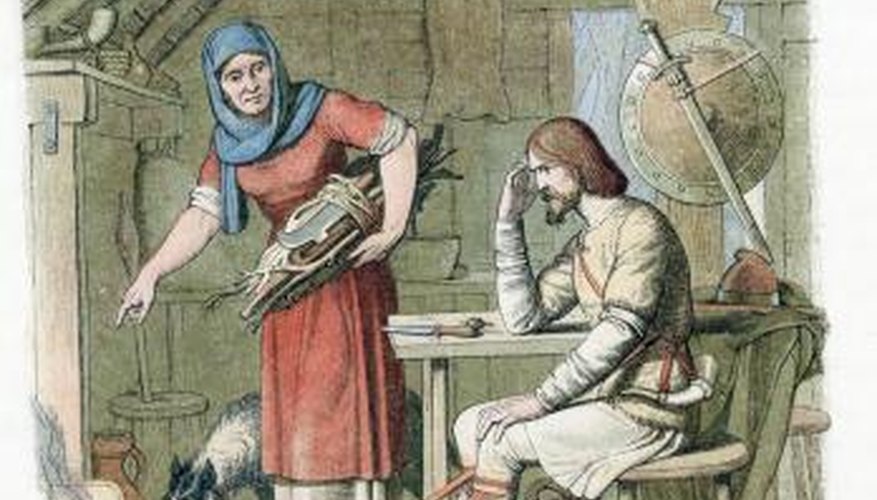The Anglo-Saxon people lived in Britain between the fifth and eighth centuries. We know quite a bit about what adults wore, from the leather breeches of the men to the richly coloured wool dresses worn by the women. While examining graves of Anglo-Saxon children can give us some clues as to ornamentation, tools, and toys used by them, we can only assume that children wore miniature, simpler versions of adult apparel.
Boy Children
Anglo-Saxon men wore a loin cloth, or short linen brief-like breeches, as an undergarment; and fitted linen, wool, or leather trousers, often with leather wrapped around the calves for protection. To this they'd add a leather or cloth belt, and a wool tunic. Many would wear the wool without an undershirt, but the "thegne," or nobleman, would add a linen shirt underneath. Boy children would likely have imitated this style of dress.
- Anglo-Saxon men wore a loin cloth, or short linen brief-like breeches, as an undergarment; and fitted linen, wool, or leather trousers, often with leather wrapped around the calves for protection.
Girl Children
Likewise, girl children would have imitated their female family members. Women of the day wore no underwear, unless they were menstruating. At that time, they would wear linen briefs, likely lined with linen pads. The base of their clothing was a linen shift, over knit stockings held up with garters. A brightly-died wool overdress would cover the shift, with a belt-like girdle tied at the waist, often holding house keys and other hanging trinkets.
- Likewise, girl children would have imitated their female family members.
- A brightly-died wool overdress would cover the shift, with a belt-like girdle tied at the waist, often holding house keys and other hanging trinkets.
Infants
Infants wore folded cloth diapers. Their parents swaddled them until they were old enough to wear versions of adult clothing. Because all clothing was handmade, it likely didn't make sense to spend much time making clothing for a child who could only wear it for such a short time before it was outgrown.
Accessories and Toys
Graves of Anglo-Saxon children contain several hints as to what life might have been like during that time. Beaded jewellery, brass hair pins, bowls with game pieces in them, and other remnants of a society long-past, suggest that while children worked a great deal, they still had some time left for play.
